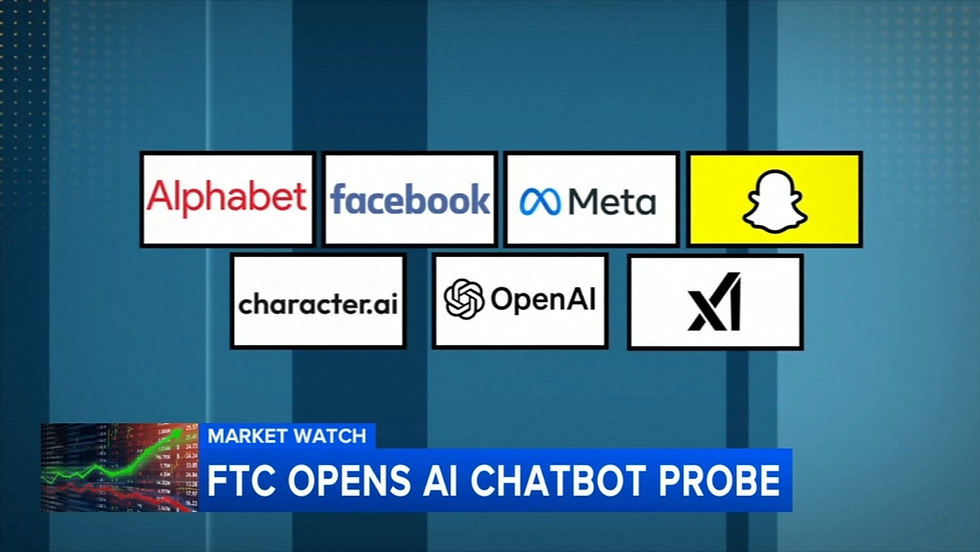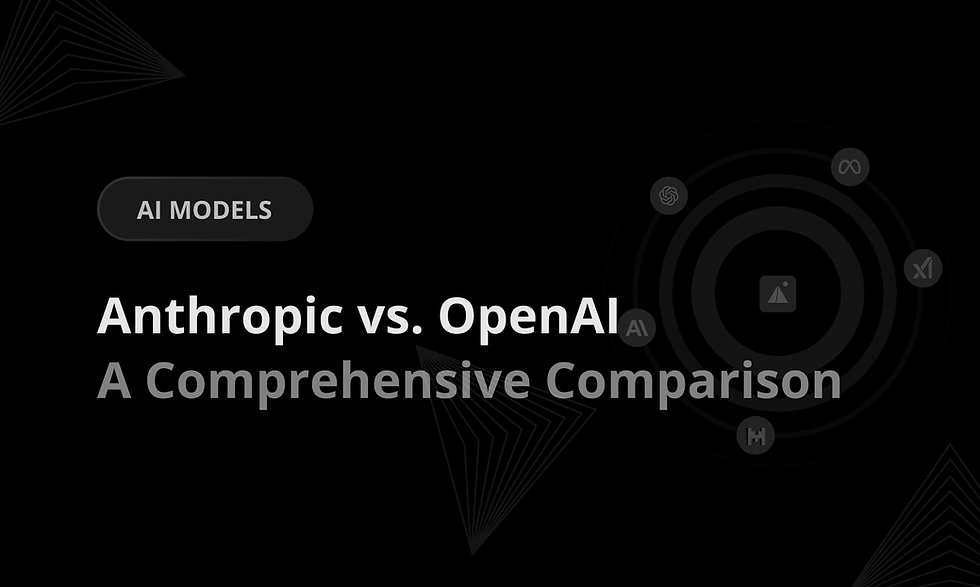OpenAI Enables Write Actions via MCP Tools in ChatGPT Developer Mode for Plus & Pro
- Aisha Washington

- Sep 15
- 12 min read
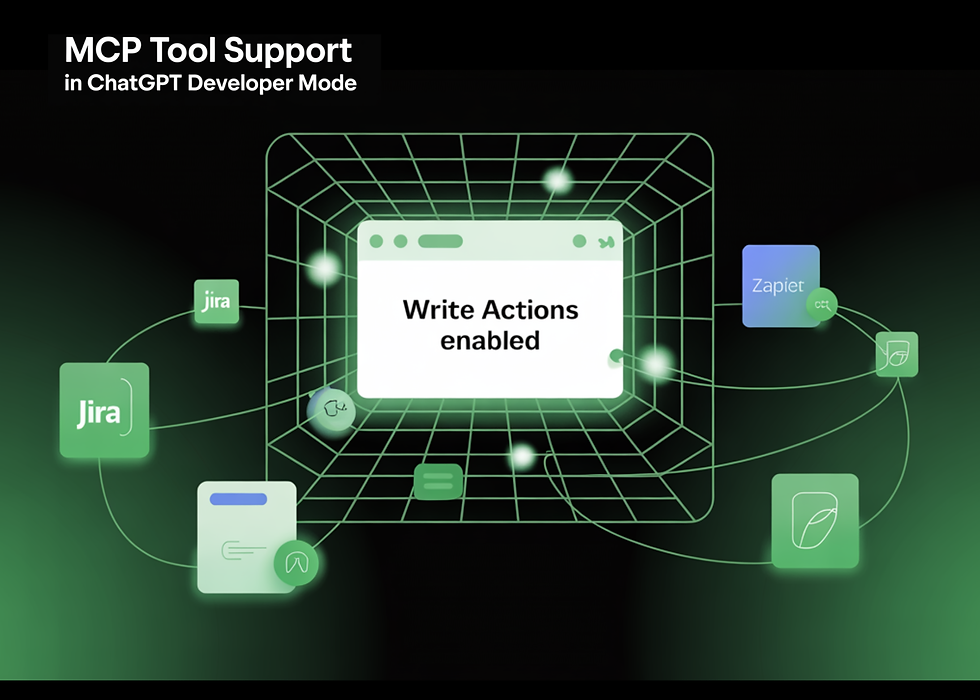
Introduction: a step-change in what ChatGPT can do for developers
OpenAI has launched ChatGPT Developer Mode, unlocking full MCP tools and write actions for Plus and Pro users. That short headline hides a substantial shift: instead of being confined to returning suggested code or instructions, the assistant can now perform programmatic, state-changing operations through managed tooling hosted on OpenAI’s Managed Code Platform (MCP). In practice, that means ChatGPT can not only draft a patch but also apply edits, run managed tasks, and write back to repositories or files when permitted.
Why this matters now is straightforward. Developer workflows are built around iteration—edit, test, review, repeat. Giving an assistant the ability to execute "write actions" turns ChatGPT from an idea generator into a working developer agent that can close loops inside a managed environment. That raises opportunity for speed and automation, but also immediate questions about safety, auditing, and enterprise governance.
Key takeaway: the big change is the combination of MCP tool access plus programmatic write actions, currently available to ChatGPT Plus and Pro subscribers under a staged rollout announced around OpenAI’s July 17 window. In the sections that follow I’ll unpack how Developer Mode works, what write actions do, the performance and architecture context, who gets access and when, how this compares to prior tooling and competitors, practical developer impacts, a concise FAQ, and a forward-looking view of where this could lead.
ChatGPT Developer Mode MCP tools and write actions

What Developer Mode opens up for Plus and Pro users
Developer Mode is described as a subscriber-facing option that grants full access to the Managed Code Platform toolset inside ChatGPT for eligible users, moving beyond read-only interactions to managed execution. Early reporting frames this as an expansion of the toolset plus the critical ability to perform programmatic write operations through MCP-managed pipelines, rather than just returning code text or hints to the user. See the rollout coverage that first described this capability and its subscription gating for more context on the launch specifics and user tiers: OpenAI rolls out Developer Mode in ChatGPT with full MCP access.
Defining “write actions” and how they work in MCP
“Write actions” are the functional addition that lets the assistant trigger managed tools to perform state-changing operations. That can mean applying a patch to a file, committing code to a repository interface exposed through MCP, or orchestrating a multi-step edit-test-apply sequence inside the managed environment. In plain language, write actions let ChatGPT go beyond “here’s a code snippet” to “I’ve applied the change and created a commit,” subject to permissions and workflow controls in place. Coverage of the updated developer-agent capabilities frames this as an evolution of Codex-style tooling where the agent interacts with back-end tooling rather than just serving code snippets: OpenAI’s Codex developer agent just got a big update.
Insight: This is the difference between a copiloting assistant and an assistant that can take the wheel for specific, controlled errands.
What tools and workflows are included
Journalists and analysts highlight that Developer Mode integrates expanded Codex/agent-style tooling into ChatGPT, enabling richer developer workflows. That includes:
Programmatic code generation plus direct application via MCP-managed editors or repo connectors.
Orchestrated multi-step tasks (e.g., generate tests, run them in an isolated environment, and apply fixes).
Agent-style tooling that can call multiple managed services in sequence under orchestration logic.
The coverage frames this as a consolidation of functionality that previously required separate agent frameworks or plugin chains. The upshot is fewer manual handoffs and more end-to-end automation inside a ChatGPT session.
Practical impact for users and the safety trade-offs
For individual developers and small teams, Developer Mode promises faster prototyping, tighter iteration loops, and fewer context switches. Examples include rapidly scaffolding a feature, applying a set of automated refactors, or producing a PR that includes both code and corresponding tests.
But the capability comes with immediate governance implications. Organizations will want to control permissions, enforce code review gates, maintain audit trails, and keep write actions scoped to safe targets. The managed nature of MCP helps—because orchestration and isolation are part of the platform—but it also centralizes execution, which changes trust and compliance calculations.
For a clear report on the rollout and what users should expect, see the announcement and coverage detailing Developer Mode and MCP access: OpenAI rolls out Developer Mode in ChatGPT with full MCP access.
Key takeaway: Developer Mode converts ChatGPT into a managed developer agent capable of applying changes, but successful adoption depends on well-designed permissioning, CI validation, and audit processes.
ChatGPT Developer Mode, MCP tooling, and benchmarks

Architecture in brief and why it matters
Under the hood, write actions rely on a managed backend—MCP servers that host sandboxed runtimes, tool connectors, and orchestration layers that accept agent instructions from ChatGPT and carry out operations in controlled environments. Academic and technical examinations of agent architectures help explain the design trade-offs at play: managed orchestration improves safety and monitoring but introduces orchestration latency and resource coordination requirements. An architecture-focused analysis of agent systems provides grounding for those trade-offs: Agent architectures and benchmarks paper.
From a systems perspective, the MCP approach typically separates model inference (the language model) from execution backends (the code or tool runners). That separation enables stricter isolation—so the assistant’s intent is translated into concrete actions that run in managed sandboxes with controlled network, file-system, and runtime privileges.
Performance comparisons and benchmarks
Early analyses compare Developer Mode’s MCP-backed write workflows to the previous model of sandboxed tool calls or plugin-based integrations. Benchmarks tend to measure:
End-to-end latency for multi-step tasks (generate change → run tests → apply patch).
Correctness rates for generated edits (does the edit compile? do tests pass?).
Throughput and concurrency under realistic user loads.
Academic benchmarks show that agent orchestration introduces additional overhead but improves the reliability of state changes compared with direct, uncontrolled execution. That is, adding validation steps and isolated test runs reduces the incidence of bad changes, even if it takes a bit longer. For a deeper dive into architecture and security considerations, see a recent technical blog that dissects OpenAI’s Developer Mode and MCP implications: Another Tech Blog deep-dive on architecture & security.
Hardware, scale and enterprise constraints
Reporting highlights that Managed Code Platform servers and orchestration are the critical backend components supporting write actions. For enterprises this implies questions like: who runs which part (OpenAI-managed vs. customer-managed connectors), what are concurrency limits, and how does network topology or VPC peering affect latency and access to internal systems?
Enterprises often care about where execution occurs for compliance reasons. MCP’s managed model reduces on-premise complexity but can raise concerns about sensitive data leaving controlled boundaries—mitigations include ephemeral sandboxes, in-cloud connectors, and narrow permission scopes.
Observed limitations and best practices for production
Practical limitations noted in coverage and benchmarks include:
Added orchestration overhead that can increase end-to-end time for write workflows.
Edge cases where generated edits are syntactically correct but semantically flawed in larger codebases.
The need to verify changes in CI/CD or staging platforms before merging to production.
As a result, coverage suggests adopting validation steps—automated tests, review gates, and staged rollouts—so write actions accelerate development without increasing risk.
Key takeaway: MCP-backed write actions trade some latency for safer, more auditable operations. Benchmarks favor correctness improvement when orchestration and validation are integrated.
Eligibility, rollout timeline, and pricing — Who gets ChatGPT Developer Mode and when

Who’s eligible and how access is being managed
OpenAI has positioned Developer Mode as a feature gated to ChatGPT subscribers, specifically Plus and Pro users. Coverage on the rollout highlights that full MCP access, including write actions, is part of the subscriber value-add rather than an immediately available free capability: OpenAI rolls out Developer Mode in ChatGPT with full MCP access.
This tiered approach aligns with OpenAI’s historical pattern of differentiating capabilities by subscription level, while enabling more advanced users to test features that could materially affect developer workflows.
Timeline and staged rollout patterns
OpenAI flagged Developer Mode during its July 17 announcement window, and subsequent reporting indicates a staged rollout rather than a single global flip. For contemporaneous context on the announcement and the rollout cadence, see the live coverage from the announcement window: OpenAI July 17 announcement live coverage.
A staged rollout allows OpenAI to monitor usage patterns, surface bugs, and tune permissioning and rate limits before broad availability.
Pricing implications and enterprise considerations
While specific per-feature pricing beyond tier gating hasn’t been universally standardized in public reporting, commentators note that bundling Developer Mode into Plus and Pro subscriptions changes the calculus for developers deciding whether to upgrade their accounts. For teams, decisions will also factor in seat licensing, pilot programs, and potential enterprise offerings that may include additional governance or dedicated connector options.
Enterprise-focused analyses recommend planning for phased adoption—sandbox pilots, permission policies, and seat planning—before enabling write actions widely across engineering organizations. For a perspective on enterprise readiness and security, see the enterprise guidance that accompanied the rollout coverage: WinBuzzer enterprise and security considerations.
Key takeaway: Developer Mode is rolling out to Plus and Pro subscribers in stages; organizations should treat it as a new platform capability that requires policy planning and pilot testing.
ChatGPT Developer Mode (MCP tools & write actions) versus previous tooling and competitors
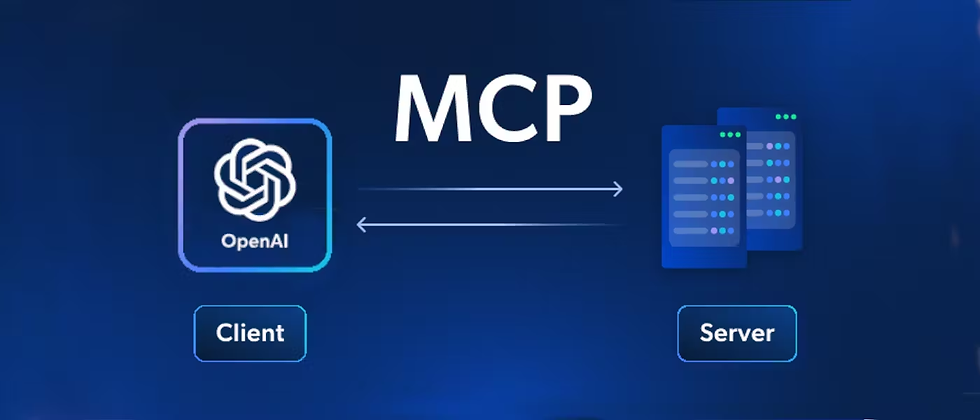
How this differs from earlier ChatGPT tools and plugins
Previously, ChatGPT could integrate with plugins or provide code suggestions but was typically limited to returning text or invoking read-only APIs. Developer Mode’s write actions represent a leap where the assistant can initiate a chain of managed tool calls that produce state changes. This moves the product from a suggestion-first model toward a managed action model, reducing manual handoffs.
Journalists compare this to earlier Codex-era agent prototypes but emphasize that the managed MCP environment consolidates execution, monitoring, and isolation into one system rather than relying on ad hoc local scripts or plugin chains. For analysis of how this fits into the Codex lineage, see the coverage of the Codex agent updates: OpenAI’s Codex developer agent just got a big update.
Versus prior Codex or agent offerings
Codex and early developer agents were powerful at code generation but often left the “apply” step to the developer. Developer Mode with MCP integrates the apply step under orchestration and safety checks. That consolidation simplifies the user experience but concentrates control in the managed backend, which is both a feature and a potential source of concern for teams that prefer localized control.
Competitor landscape and trade-offs
Competitors and open-source projects are taking different tacks: some emphasize on-prem or self-hosted agent frameworks to maximize control and compliance, while others offer managed services that promise scale and safety. The trade-offs are clear:
Managed MCP approach: lower operational burden, built-in auditing and orchestration, faster time-to-value; trade-off is reduced on-premise control.
Self-hosted agent frameworks: maximum control and customization; trade-off is higher maintenance, security configuration effort, and less polished orchestration out of the box.
The reporting contrasts these models and highlights that organizations will choose based on priorities: speed and managed safety versus absolute control and customization. See comparisons and feature analysis in the deployment coverage: Tom's Guide announcement analysis.
Practical comparison points for teams
From a practical standpoint, teams should weigh:
Ease of adoption: Developer Mode is built into ChatGPT for eligible subscribers.
Operation model: managed MCP servers vs. self-hosted tooling.
Security model: centralized governance and audit vs. local control and potential custom hardening.
Key takeaway: Developer Mode narrows the gap between suggestion and action; teams must weigh managed convenience against control and compliance needs.
Real-world usage and developer impact — How write actions via MCP tools change workflows
Common use cases and concrete developer scenarios
Early adopters and analysts highlight tangible workflows that improve immediately:
Automated PR generation: ChatGPT can create a branch, apply edits, run a test suite in an isolated environment, and open a PR with a description and test artifacts.
Scripted refactors: for refactoring tasks that follow clear patterns (rename symbol across a codebase, modernize API calls), the assistant can apply consistent edits.
Test scaffolding and bug fixes: the assistant can generate failing tests, propose fixes, and run them in a sandbox to validate the approach before producing a commit.
Repetitive maintenance: updating dependency versions or applying standard configuration changes at scale.
These examples show how write actions can reduce time-to-commit for well-scoped tasks while preserving human review for higher-risk changes.
Insight: The most powerful use cases are those that are routine and well-bounded—low ambiguity, high-rule automation.
Enterprise adoption: governance and staged rollouts
Enterprises that enable write actions will likely adopt a staged approach: begin with non-production repositories and internal tools, require pull-request workflows for any production-facing changes, and implement strict role-based permissions. Analysts recommend logging every write action and surfacing an auditable chain of intent (what the assistant proposed, what was executed, and who approved it). For security-focused guidance on adopting MCP write actions in enterprise environments, see the enterprise analysis: WinBuzzer enterprise and security considerations.
Developer experience: faster iteration with guardrails
For Plus and Pro subscribers, the developer experience is now more of a closed loop: generate → validate in a managed sandbox → apply or open changes. That tighter feedback loop can accelerate debugging and prototyping. However, teams need to design review gates and automated validation so the faster loop doesn’t become a source of unchecked risk.
Risks, mitigations, and recommended practices
Common recommendations include:
Scope write permissions narrowly and use least privilege.
Keep critical systems behind CI/CD gates; never allow direct production writes without review.
Use automated test suites and static analysis as gatekeepers.
Maintain detailed audit logs of tool activity and approvals.
Key takeaway: Write actions change the rhythm of developer work—speeding routine tasks while making governance and validation essential to avoid mistakes.
FAQ — ChatGPT Developer Mode & MCP tools
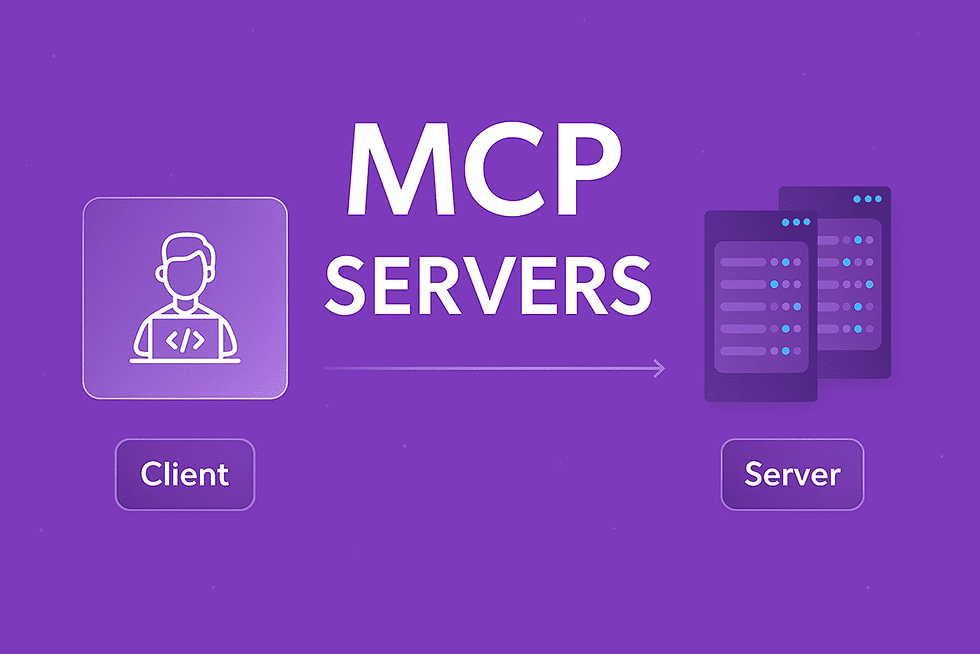
Q: Who can use Developer Mode and write actions?
A: Developer Mode with full MCP access and write actions is being rolled out to ChatGPT Plus and Pro subscribers, per rollout reporting that framed the capability as subscriber-gated. For the initial coverage of availability, see the rollout article: OpenAI rolls out Developer Mode in ChatGPT with full MCP access.
Q: What exactly are “write actions” via MCP tools?
A: Write actions let the assistant trigger managed tool operations that perform state-changing tasks—like applying code edits, committing changes, or orchestrating multi-step updates—through the Managed Code Platform rather than only returning code text for a person to paste. See the analysis linking this to Codex-style advances: OpenAI’s Codex developer agent just got a big update.
Q: When was Developer Mode announced and rolled out?
A: The feature was highlighted during OpenAI’s July 17 announcement window, and coverage indicates a staged rollout rather than immediate global availability: OpenAI July 17 announcement.
Q: Is Developer Mode safe for enterprise use out of the box?
A: Not fully—coverage recommends staged pilots, permission scoping, logging, and CI validation before trusting write actions with production systems. Enterprises should treat write actions as a platform capability that needs governance and audit controls: WinBuzzer enterprise guidance and a security analysis of the architecture: Another Tech Blog deep-dive.
Q: How does performance compare with previous modes?
A: Early benchmarks indicate that managed MCP execution can add orchestration latency but improves controlled execution and correctness by integrating validation and sandboxing. Academic benchmarks on agent architectures help explain these trade-offs: Agent architectures and benchmarks.
Q: Can write actions access internal company systems?
A: That depends on the connector model and enterprise configuration. Managed connectors and secure linkages can enable controlled access, but enterprises should be deliberate about what connectors are enabled and how credentials or network access are provisioned.
Q: What should teams do before enabling write actions broadly?
A: Start with pilot projects, define permission policies, require PR review for production changes, instrument logging and audit trails, and integrate CI checks to catch semantic regressions before deployment.
(FAQ entries draw on the reporting and analysis linked above to ground the answers in the public rollout coverage.)
What’s next for ChatGPT Developer Mode and MCP write actions
Developer Mode with MCP write actions is a first step toward a future where AI assistants move from being advisors to being controlled executors of routine engineering work. In the near term, expect advanced users and teams on Plus and Pro subscriptions to experiment aggressively—finding quick wins in refactors, test generation, and maintenance scripts. Those early experiments will surface patterns for scoping, permissioning, and safe automation.
Over the next year or two, organizations will codify these patterns: sandboxes for exploratory runs, CI hooks to validate write actions, and governance playbooks that balance speed with control. Vendors and platform teams will deliver more refined connectors and enterprise-grade audit tooling to make the invocation chain transparent and traceable.
Longer term, if managed developer agents like this see broad adoption, the industry will reassess where manual work really adds value. Routine, well-defined engineering chores will be heavily automated, freeing engineers to spend more time on design and system-level thinking. At the same time, the market will bifurcate: some organizations will prefer managed platforms for speed and operational simplicity, while others will double down on self-hosted agent frameworks for control and data governance.
There are uncertainties and trade-offs baked into this path. Managed write actions reduce friction but centralize control; orchestration improves safety but increases latency; automation accelerates iteration but requires disciplined validation to avoid propagating subtle errors. The practical response is balanced: adopt carefully, instrument everything, and treat write-capable agents as powerful tools that still need human oversight.
For readers and organizations looking to act now, consider structured pilots that pair developer teams with security and platform engineering. Use non-production environments to refine permission models, build auditability into your workflows, and measure the real productivity gains against the governance costs. If you’re an individual developer on Plus or Pro, try Developer Mode on a small repo and document the outcomes—your learnings will be valuable to teams thinking about wider adoption.
In sum, ChatGPT Developer Mode and MCP write actions are an important evolution in AI-assisted development. They bring the promise of faster, more integrated workflows while nudging teams to evolve governance, testing, and auditing practices. The coming months will be informative: as more users experiment, the community will discover which tasks are safe to automate and which still require a human in the loop. That discovery process, not the technology alone, will determine how transformative this capability becomes.
